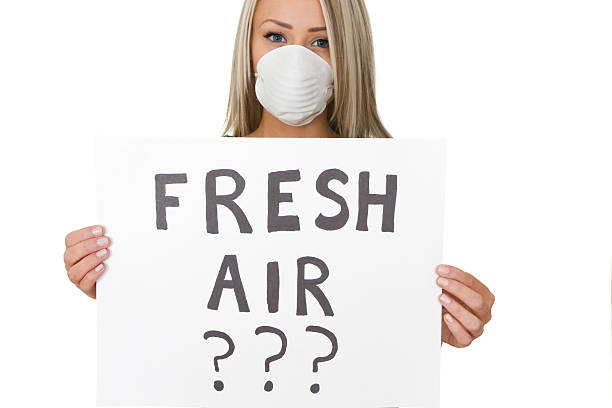Indoor pollution: an invisible enemy, what it is and how to take cover
- June 24, 2019
- Posted by: sagest
- Category: Blog

That of indoor pollution is a factor we are not used to taking into consideration: locked within the four walls of the home, or in the office, in our children’s school and even in the hospital, we think we are safe from smog and harmful substances that instead pollute the air from outside.
In reality, the air in our homes and offices, in general in confined places, is more polluted than we imagine. The term “indoor environment” refers to the non-industrial confined living and working environments and in particular, those used for dwelling, recreation, work and transportation.
Indoor pollution refers to the presence of physical, chemical and biological contaminants in the air
Of closed living and working environments.
In the case of homes, schools, offices, public buildings, means of transportation, etc., indoor pollution is frequently underestimated due to factors of a purely cultural, psychological or historical nature. In fact, several researches have shown that in these places, exposure to pollutants of various kinds is even higher than that related to pollutants in the outdoor or industrial environment.
An exception in this regard is a special case of indoor air pollution: that in hospital settings. Here, attention is also greater because of the frequent possibility of contracting various diseases, including occupational diseases; consequently, controls aimed at protecting the health of staff and hospitalized patients are greater.
The CONCENTRATION LEVELS that pollutants reach inside buildings generally are higher than those of the outside air and especially
the amount of time spent by people inside buildings compared to time spent outside is an order of magnitude greater. About 90%.
A study conducted as early as 1998 by the EPA estimated that indoor concentrations are generally 1 to 5 times higher than outdoor concentrations and that indoor exposure is 10 to 50 times higher than outdoor exposure.
The World Health Organization (WHO), at the conclusion of a series of studies carried out in recent
twenty years by groups of researchers from different nations, at different latitudes, on workers with tasks and rhythms of
comparable but not overlapping work, has shown how chemical-biological contamination from indoors is a major cause of various types of diseases.
The possible disorders caused by indoor pollution
The World Health Organization estimates that indoor air pollution is responsible for 4.3 million deaths each year.
Under the acronym Sick building syndrome (Sbs), a number of complaints are indicated, such as eye irritation, headache, nausea, numbness, and drowsiness.
Sbs is joined by Building related illness (Bri), discomfort related to contaminants in indoor environments, and Multiple chemical sensitivity (Mcs), which is the inability to tolerate a chemical environment or class of chemicals.
What to do, then, to improve indoor air and avoid health discomfort?
It is sufficient to ventilate rooms at least one hour a day, use electrostatic or microfiber cloths to remove dust, use fewer chemicals to clean the house, and have proper maintenance of aeraulic systems. Installing an air conditioner also brings benefits. In fact, through the filtering action and control of relative humidity, the quality of indoor air is improved, and by a lot. Very important, however, is to have good maintenance. Filters, if exhausted, no longer perform their filtering function and thus hygiene will be compromised.
Small behaviors that enable big results.
What are the obligations and regulatory dictates for the private individual and the public administration?
With the aim of achieving those conditions of well-being and healthfulness that are optimal for most people to live fully, various guidelines and technical regulations have been defined over time that place the focus on the pollutants involved, their action on health, the environmental quality standards to be pursued, and the best building and plant engineering procedures and technologies to achieve them.
Normative references
Inail, in collaboration with the WHO and the European Agency for Safety and Health at Work, has taken care of this, promoting initiatives to improve environmental quality and reduce the risks of contracting diseases in the workplace. The changes introduced by amendments to Legislative Decree 81/08 require companies to meet their obligations by assessing all risks in the workplace. Regarding air quality aspects, the structure of the decree is set first with the identification of responsible parties and then with the description of management measures and technical adjustments necessary to reduce work risks. Penalties for noncompliance are indicated at the end of each title. The relevant titles are:
- Title I (Art. 1-61) Common principles: General provisions, institutional system, workplace prevention management, criminal provisions;
- Title IX (Art. 221-265) Hazardous substances: protection from chemical agents, protection from carcinogens and mutagens, protection from asbestos exposure hazards, penalties;
- Title X (art. 266-286) Exposure to biological agents: employer’s obligations, health surveillance, penalties;
Specifically, the new provisions require the ’employer to regularly maintain places, facilities, devices and eliminate detected defects that may affect the safety and health of workers.
Peculiar penalties and imprisonment are provided for non-compliance or enforcement.
